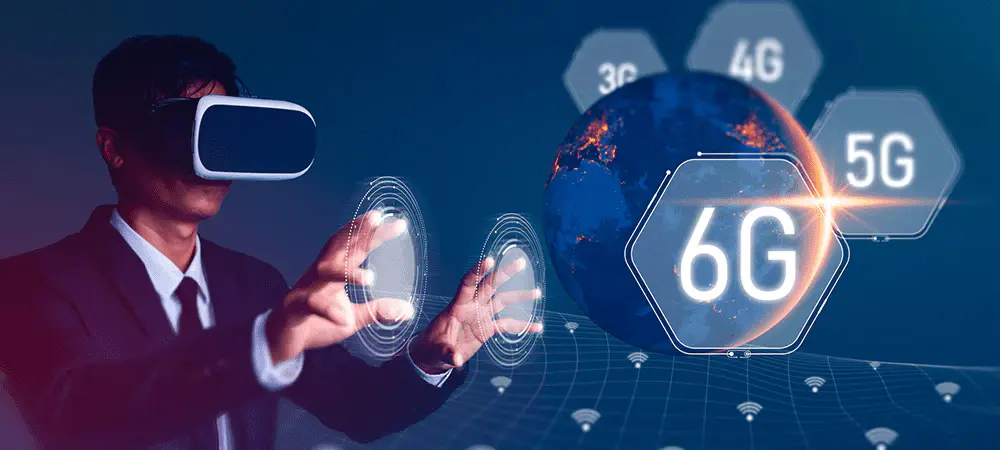The future of mobile connectivity is rapidly evolving, with researchers exploring groundbreaking advances in telecommunications. The next leap in this journey is 6G, the sixth generation of wireless technology, which could surpass the speeds of current 5G networks by an astonishing margin. Imagine downloading 20 movies per second or having uninterrupted connectivity even in the most crowded spaces. This potential is closer to reality thanks to a revolutionary technique developed by scientists at University College London (UCL), promising to boost wireless data transfer speeds by 9000 times that of today’s 5G connections. Let’s delve into how this technology works, the innovation behind it, and what it could mean for the future of wireless communications.
The Race Toward 6G: Faster, Smarter, and More Versatile
With the digital world becoming increasingly data-driven, the demand for faster wireless connections has skyrocketed. The 5G networks, while significantly faster than their predecessors, often struggle to keep up with demand in high-traffic situations, such as concerts, sporting events, or crowded public places like train stations. These connectivity issues largely stem from the limited frequency bands allocated to 5G, typically below 6 GHz, which offer narrower bandwidths that restrict data flow.
Enter 6G, a technology anticipated to operate across a much broader frequency range, potentially extending up to 150 GHz. Researchers, led by Dr. Zhixin Liu and his team at UCL, are pushing the boundaries of current telecommunications by using advanced techniques to transmit data across a wide range of frequencies, from 5 GHz to 150 GHz. This innovative approach holds promise for making 6G networks resilient, ultra-fast, and capable of handling heavy data loads.
Breaking Records: How UCL Achieved 938 Gigabits Per Second
In a recent experiment, Dr. Liu’s team achieved wireless data transmission at an unprecedented speed of 938 gigabits per second (Gbps). To put that into perspective, this is over 9000 times faster than the average 5G download speed. Such a rapid transfer rate, known as multiplex data transmission, is a record for sending multiple data streams simultaneously. With these speeds, users could download vast quantities of data in seconds, transforming the way we interact with digital content.
For their experiment, the UCL team used a blend of digital-to-analogue conversion and laser technology. The lower end of the frequency range (up to 6 GHz) relied on traditional digital-to-analogue converters, while the higher frequencies (over 100 GHz) employed laser techniques to carry the data. This combination allowed them to transmit a vast spectrum of data without the limitations usually encountered at high frequencies.
Why Wider Bandwidth Matters
The current 5G technology has its limitations, partly due to the narrow frequency bands it uses, which can get congested easily. Dr. Liu likens this to “narrow, congested roads” versus the “10 carriage motorways” envisioned for 6G. By extending the frequency range significantly, 6G would alleviate these limitations, providing faster and more consistent connectivity, even in highly populated areas or when multiple users access the network at once.
This development could also open up a host of new applications, from immersive virtual reality experiences to advanced Internet of Things (IoT) ecosystems, and seamless integration with smart cities. Imagine a world where every device you use is interconnected and responsive without any delay, powered by a network that’s not just fast, but built to handle enormous data volumes efficiently.
The Future of Connectivity: What 6G Could Bring
While 6G technology is still in the research and development phase, experts believe it could fundamentally change the wireless landscape. Early collaborations between UCL and smartphone manufacturers, as well as network operators, indicate that this technology is on the radar of industry giants looking to shape the future of connectivity.
When 6G eventually becomes mainstream, users can expect a host of improvements:
- High-speed Data Transmission: With speeds possibly exceeding 1 terabit per second, downloading and streaming large files or high-definition content could become nearly instantaneous.
- Enhanced Reliability in Crowded Areas: 6G networks would provide stable connections in busy public spaces, a significant improvement over current network congestion issues.
- New Applications: From augmented reality (AR) to telemedicine, 6G could facilitate applications that require real-time data processing without delays.
What’s Next for 6G?
While UCL’s 6G technology is promising, other techniques are also being explored to shape the future of mobile networks. For instance, some researchers are investigating the use of terahertz waves for even faster data transmission. As different approaches continue to evolve, the telecommunications industry is expected to converge on a standard that will set the stage for 6G networks by the end of this decade.
Further Reading and Related Products:
- University College London – Engineering and Telecommunications Research
- Samsung Galaxy Z Fold5 – Ready for 6G?
- Apple iPhone 15 Pro Max – Current Capabilities and Future Potential
- Qualcomm – Research on 6G Network Technologies
- IEEE Spectrum – Articles on Next-Generation Wireless Networks
Conclusion
The possibilities unlocked by 6G networks, potentially 9000 times faster than today’s 5G, hold the power to transform connectivity as we know it. From seamless streaming at packed events to new possibilities for IoT and immersive tech, the future of wireless communication promises to be a leap forward for users worldwide. While practical applications may still be a few years away, the potential is undeniable, and researchers like those at UCL are pushing the boundaries of what’s possible. The road to 6G may be long, but with advancements like these, the destination promises a new era of connectivity.
For More Updates: Technology


